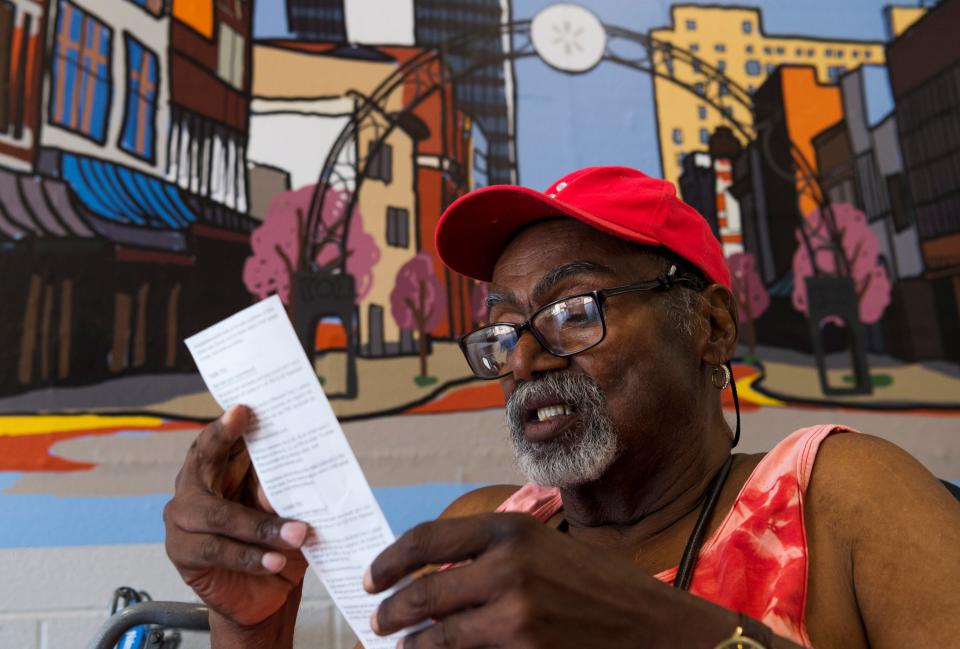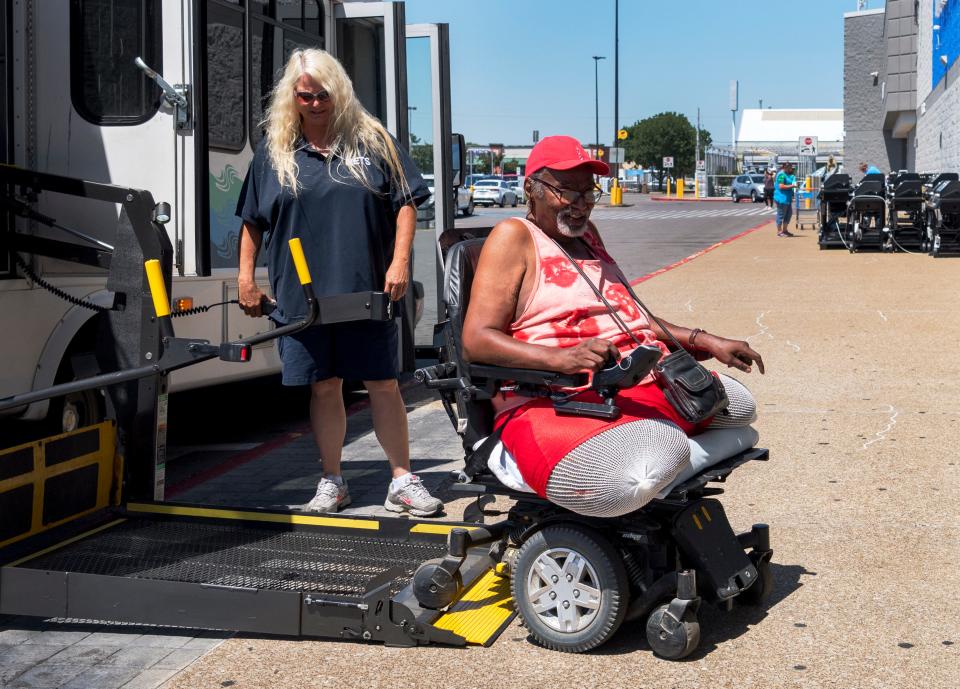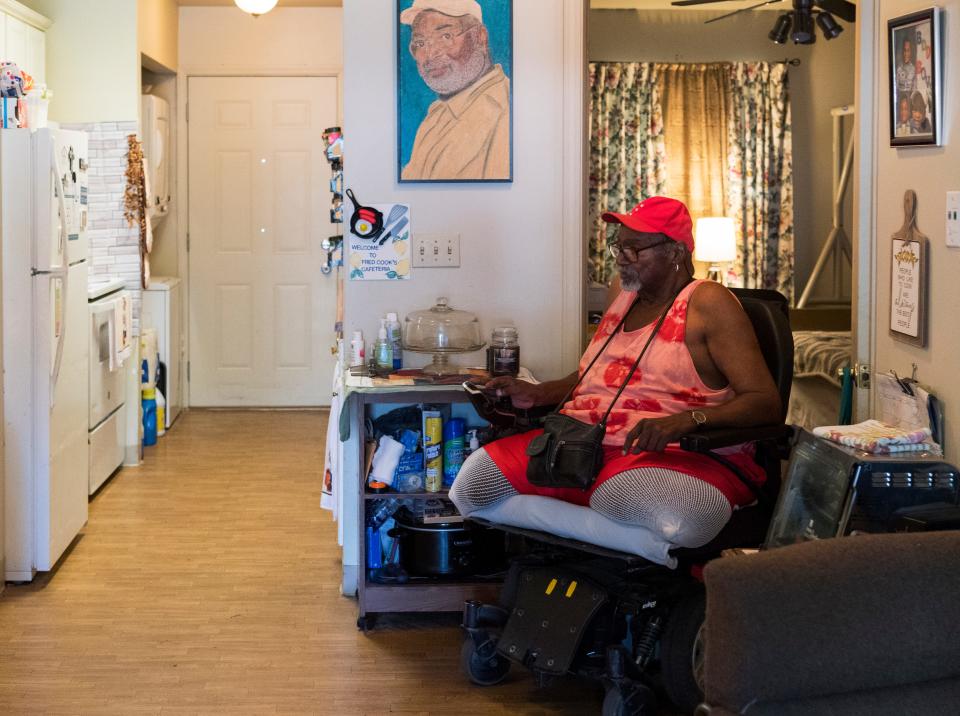What is a 'food desert'? Some 40% of Evansville residents live in one.
EVANSVILLE, Ind. – For some people in Evansville, "getting groceries" is as simple as a quick drive to a fairly close supermarket, loading up the bags in the trunk and then heading home.
For 74-year-old Fred Cook – and thousands of other people in some city neighborhoods – it's nowhere near as easy.
Cook lives in an area labeled a "food desert" — geographic spots in Evansville where access to fresh, affordable food is more limited than others. And Cook isn't alone. According to Feed Evansville, some 40 percent of city residents live in a food desert.
Local news: It's been a wild few weeks for Evansville car wash manager who helped spot Alabama fugitives
Feed Evansville is an initiative of the Evansville Food Commission, created to meet food needs during the COVID-19 pandemic.

Its chairwoman, Lisa Rhyand Vaughan, said the share of Evansville residents experiencing food insecurity jumped from 14 to 20% at the start of the pandemic. At the height of the pandemic, the organization was distributing 7,000 food boxes each week. It's still putting out about 2,000 weekly.
Access to fresh, affordable food can be tough for those living on tight budgets. Add in other factors – poor health, disabilities and more – and doing something as simple as getting enough food to live on for a few days becomes a Herculean task.

When Fred Cook wants to go to the grocery store, his planning usually starts two weeks in advance.
He has to arrange for a METS Mobility Bus Service pick-up to take him and his wheelchair to grocery store. Driver shortages and overbooked schedules make it tougher to arrange trips on shorter notice, he said.
Getting around the grocery store in the wheelchair takes time, too. So does checking out. And once Cook is done shopping, he often waits as much as 45 minutes for another bus to pick him up.
The trips are tiresome, and Cook wishes he could stock up a month's worth of groceries each time. But that, too, is impossible. There's only enough space on the bus for a week's worth of food.
Another option is quicker, but far more dangerous: Crossing U.S. 41, one of the city's busiest highways, at the Covert Avenue intersection to reach the Simpson's Market on the other side.

“When I get (to Simpson's), there's a limit to what I have to get because I have to pack it all back in here,” said Cook, referencing his wheelchair. “I’d say for me to go to the store, it takes up to two hours, if not more. (Maybe) three.”
Local news: A local barbecue joint owner is teaming up with his son to build a higher business profile
There are other stores nearby that offer a more limited choice of groceries. Dollar Tree and Dollar General have items such as soup, bread and eggs. But many residents need more.
Food deserts are most prevalent in low-income areas and areas with more limited transportation access, Rhyland-Vaughan said.
Carol Langley, Gilda Slaughter, and Margorie Starks live in the Memorial Point Senior Living apartments.
The ladies joke that the field next to their apartment building would be perfect for a grocery store.
“If we had one here, it wouldn’t be so hard for the elderly people,” Starks said. “ A lot of them won’t drive or can’t drive. It’s scary to drive way out for a long distance to go to the grocery store and take a chance.”

Memorial Baptist Church owns the Downtown Market plaza on Lincoln Avenue where a Dollar Tree is located, and also owns the apartment complex where the three women live. The church bought the plaza in 2015. Before the Dollar Tree, several grocery stores had tried to make a go of it in the complex.
Locally owned grocery stores have not been able to last at the location because of big- box stores such as Walmart and Target, said Serita Cabell, operations director for Memorial Baptist Church. Trying to keep up with the prices charged by national change, and the maintenance on the building, is difficult.
“We really tried and it put a strain on the organization as a whole to try and maintain it …,” she said. “Literally, trying to cover people, inventory and operational cost, versus what (the store) was making just wasn't working.”
Outdated equipment and high utility bills only made the fight tougher, Cabell said.
So where can you go for help?
Between Vanderburgh and Warrick counties, there are more than 30 food pantries, soup kitchens and other assistance outlets. The Feed Evansville program maintains a list of outlets on its website.
Like many churches around the city, Memorial Baptist offers a food pantry and urban garden to those that are in need.
A problem for many is the lack of transportation or dependable public transportation.
At several of the pantries, attendees are able to get non-perishable items like pasta, rice and other canned foods. Meat and frozen or refrigerated foods are rarely offered at these pantries.
But getting to and from the pantries is still a hurdle.
Feed Evansville's Rhyland-Vaughan said the city needs a community food-share store and a delivery system.
"The big thing would be then once we put it in, we have to have people go and shop there," she said. "And it can't just be the people in that neighborhood.
“I believe that my community is worth it. You know, and I feel like the ... best thing we can do in life is show up and be there for others, even if we don't know who they are."
Rayonna Burton-Jernigan covers diversity and culture-related topics and can be contacted at rbj@courierpress.com or (812) 454-1765.
This article originally appeared on Evansville Courier & Press: What do you do if you live in a 'food desert' in Evansville?

